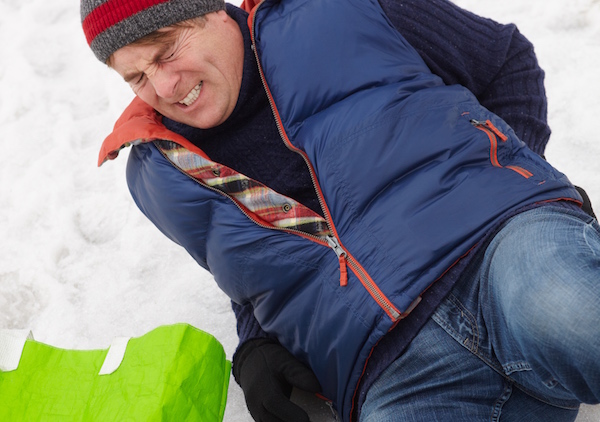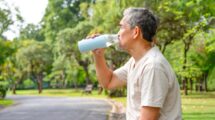
Slip Sliding Away
by Peggy Edwards
Recently, my friend Susan recounted this story: “My husband had knee surgery in December. When we went back for his visit in early January,I was surprised to see the waiting room filled with older people. They all had casts on their arms and legs —resulting from winter falls.”
Susan should not have been surprised:
• In Canada, one in four people over the age of 65 fall at least once each year, a rate that increases to one in two people over the age of 80.
• It is estimated there are 20,000 annual visits to Ottawa emergency rooms related to falls, most of which involve older adults.
• Slipping, tripping and stumbling on any surface is the main cause of falls, however a rash of slips and falls usually accompanies the winter months. Nearly two- thirds of these mishaps occur on snow, ice, or wet sur- faces near entrances or in parking lots.
Fall Prevention is Important Because Mishaps Can Have Serious Consequences
Falls can have serious consequences for older individuals,including long hospitalizations,chronic pain, reduced mobility, loss of independence and even death. In Ottawa, approximately 70 residents die each year due to falls, and in 2005, falls were the leading cause of injury, hospitalization, and death among the city’s older adults.
What you can do to prevent falls
Here are the best tips for preventing falls, recommended by the Osteoporosis Society, Ottawa Public Health, the Public Health Agency of Canada and the US Preventive Services Task Force.
Be active at least 150 minutes (2.5 hours) every week. Minutes count – you can be active in blocks of 10 minutes at a time. It is best to combine daily aerobic activity (such as walking) with strength and balance activities (such as lifting weights and stretching or yoga) at least twice a week. Continue to enjoy activities you love, such as skiing or skating, but avoid taking undue risks.
If you have mobility or balance problems, consider using an assistive device. A walker or properly measured cane will help you maintain your balance and encourage confidence and independence.
Have your eyes checked every year and corrected for changes in your vision.
Review your medications (including prescriptions, over-the-counter pills, vitamins and herbal supplements) with your doctor or pharmacist at least once a year or when you start new medication. Medication use and side effects, such as dizziness, is often linked to falls.
Alcohol affects medications and falls. Drink moderately and abstain if you are taking a medication that is affected by alcohol.
Eat regular meals, including bone-building foods and drinks high in calcium.Take a daily vitamin D supplement if you are over 55 years of age. Research has shown getting 700 to 800 international units (IUs) per day reduces the risk of falls among older individuals by more than 20 per cent.
Keep your home well-lit and free of trip hazards, such as scatter rugs and items on the stairs. Add secure grab bars in the bathroom.
Going up and down stairs accounts for 26 per cent of seniors’ falls. Install sturdy handrails that extend to the bottom on both sides of your stairs, inside and out. Hang on to the rails when using the stairs. Never run down stairs, especially in sock feet. (Age is not the threat here. Last month, my 19- year-old grandson took a nasty fall and broke his collarbone running down the stairs at my house.)
Talk to your health-care provider about previous falls, including slips and trips, or if you have fears of falling.

During the winter:
- Wear warm boots that grip.
- Pay attention to your surroundings and watch out for black or invisible ice and wet leaves.• Exercise caution when exiting cars, buses and trains, and when walking up and down outdoor stairs.• Keep your steps and pathways clear. Keep your salt and shovel indoors to avoid slipping while on your way to retrieve it outside.• Slow down. When walking on ice, do the “shuffle” rather than the “stride,” and go sideways on inclines.
Learn more about fall prevention.
There are several online resources which cover this topic. Check out www.findingbalanceontario.ca (includes a neat quiz); Public Health Agency of Canada at www.phac-aspc.gc.ca; and Osteoporosis Canada at www.osteoporosis.ca. You can also call your local public health department for more advice and information about specific programs in your area.Is there any good news in the nasty business of falls? Yes! Falls are preventable and you can take action now.
Peggy Edwards is a well-known writer and speaker on aging and health and is the co-author of The Healthy Boomer:A No Nonsense Midlife Health Guide for Women and Men.






